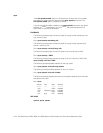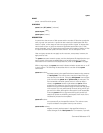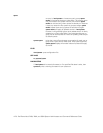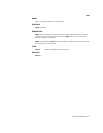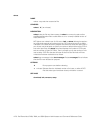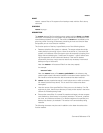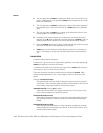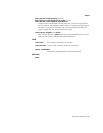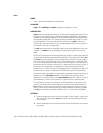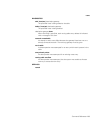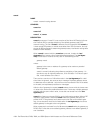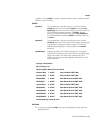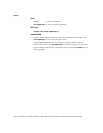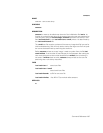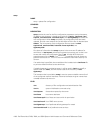
A-82 Dell PowerVault 720N, 740N, and 760N System Administrator and Command Reference Guide
NAME
route - manually manipulate the routing table
SYNOPSIS
route [ -fn ] add|delete [ host|net ]
destination
gateway
[
metric
]
DESCRIPTION
route allows the system administrator to manually manipulate the network rout-
ing table for the specific host or network specified by
destination
. The
gateway
argument is the nexthop gateway to which packets should be addressed for the
corresponding
destination
. The
metric
argument indicates the number of hops
to the
destination
. The
metric
argument is required for the add command; it
must be zero if the
destination
is on a directly-attached network, and non-zero if
the route is via one or more gateways.
The add command adds the specified route for the given
destination
to the rout-
ing table. The delete command deletes the specified route from the routing
table.
Routes to a particular host are distinguished from those to a network by interpret-
ing the Internet address associated with
destination
. The optional keywords net
and host force the destination to be interpreted as a network or a host, respec-
tively. Otherwise, if the
destination
has a local address part of INADDR_ANY
(i.e., 0), or if the
destination
is the symbolic name of a network, then the route is
assumed to be to a network; otherwise, it is presumed to be a route to a host. If
the route is to a destination via a gateway, the
metric
parameter should be
greater than 0. If
metric
is set to 0, the gateway given is the address of this host
on the common network, indicating the interface to be used for transmission.
All symbolic names specified for a
destination
or
gateway
are looked up first as a
host name in the /etc/hosts database. If this lookup fails, then the name is
looked up as a network name in the /etc/networks database. default is also a
valid destination, which is used if there is no specific host or network route.
The netmask for a route to a network is implicitly derived from the class of the
network; to override that, the
destination
for a network route can have /
bits
or
&
mask
after it, where
bits
is the number of high-order bits to be set in the net-
mask, or
mask
is the netmask (either as a number defaults to decimal, precede
with 0x for hexadecimal, precede with 0 for octal - or as a number IP address).
OPTIONS
-f Remove all gateway entries in the routing table. If this is used in conjunction
with one of the commands, route removes the entries before performing
the command.
-n Prevent attempts to print host and network names symbolically when report-
ing actions.
route



